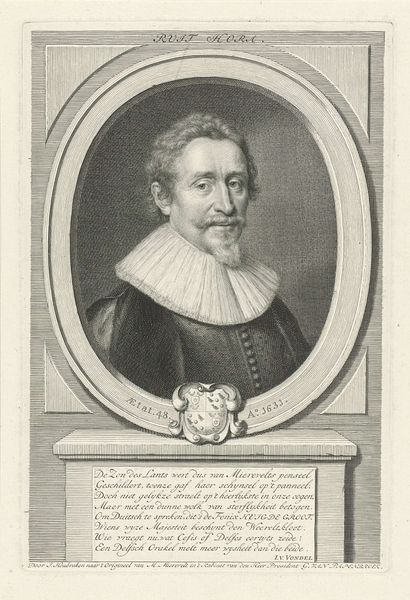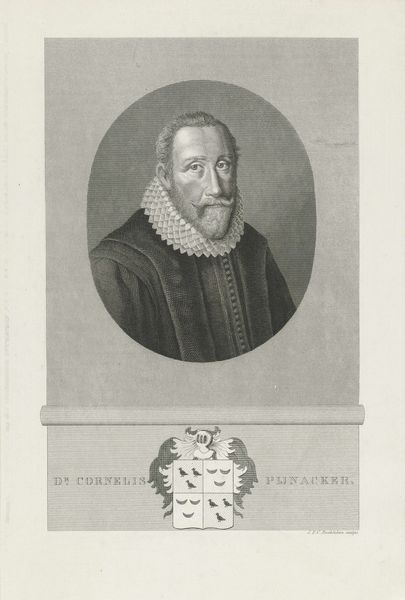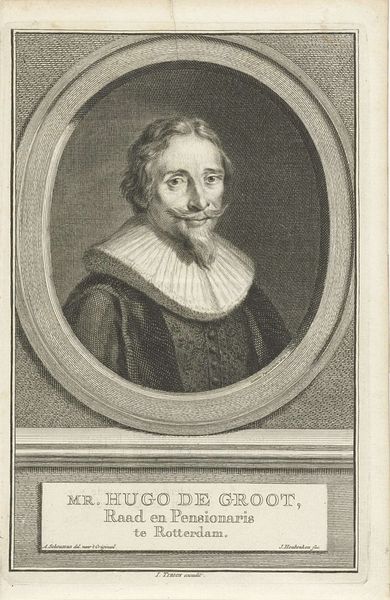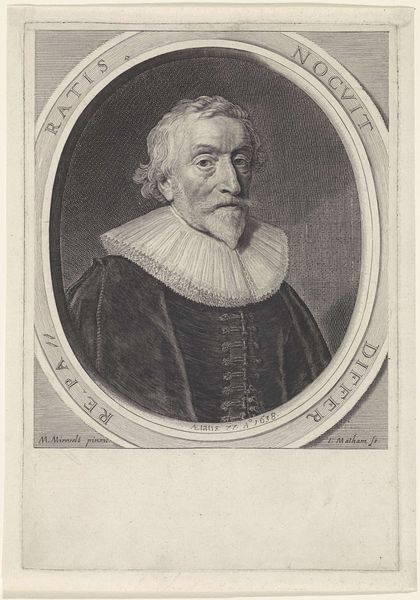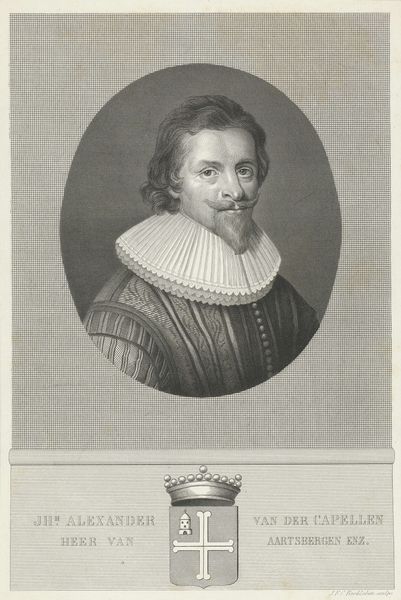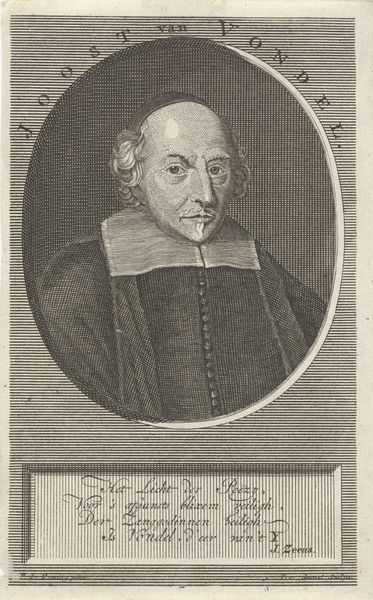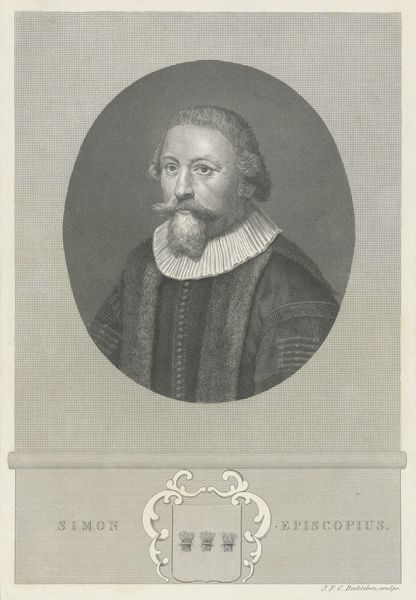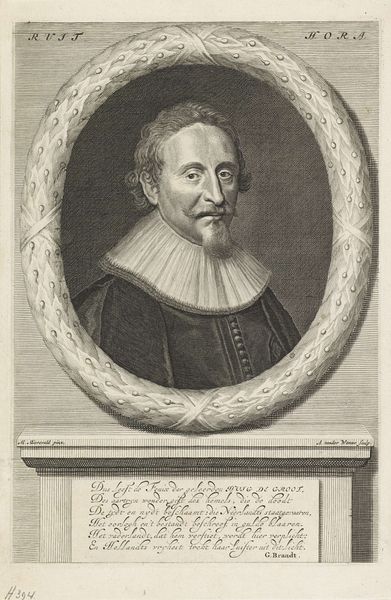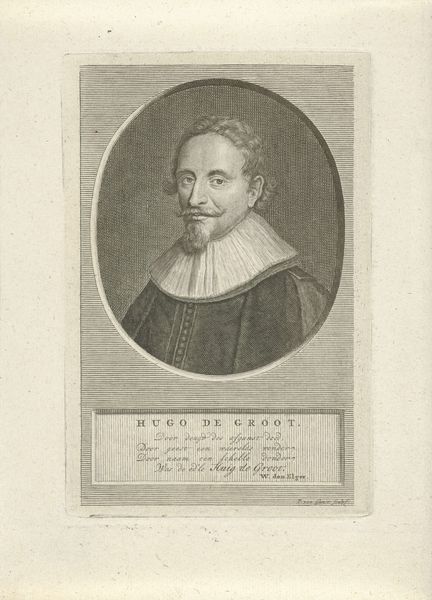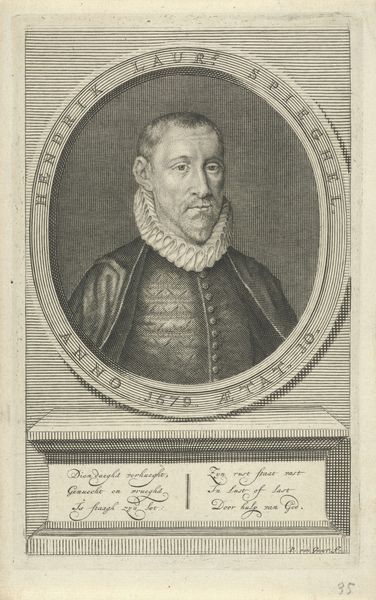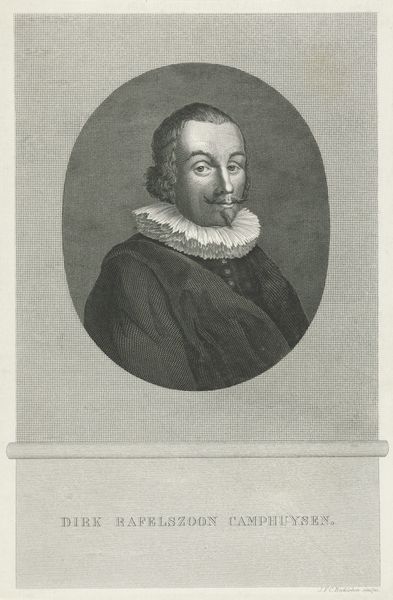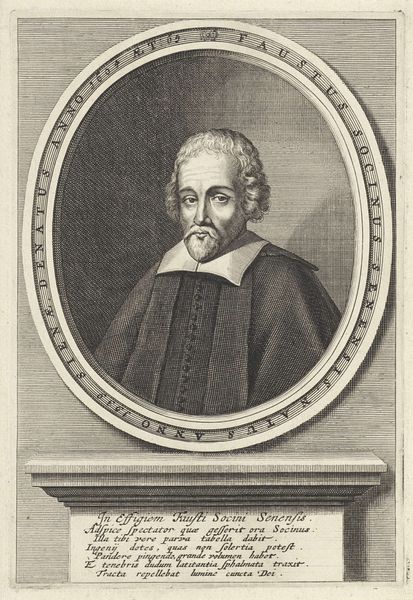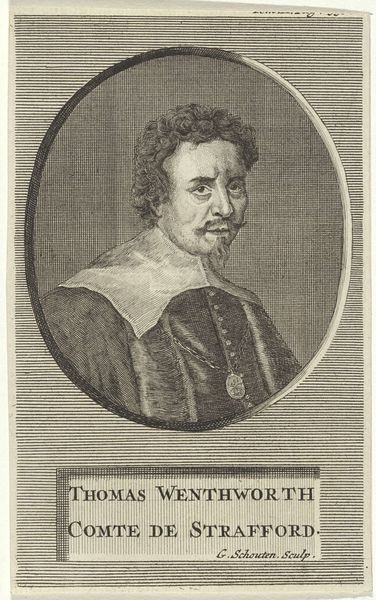
print, graphite, engraving
#
portrait
# print
#
old engraving style
#
archive photography
#
historical photography
#
19th century
#
graphite
#
history-painting
#
academic-art
#
engraving
Dimensions: height 224 mm, width 145 mm
Copyright: Rijks Museum: Open Domain
This is a portrait of Hugo de Groot, made by Jan Frederik Christiaan Reckleben, using a technique called etching. The image is created by coating a metal plate with a waxy substance, then scratching away the coating to expose the metal. Acid is then applied, which bites into the exposed areas, creating lines. These lines hold ink, which is transferred to paper under pressure. The fineness of the lines, and the control the artist has over them, mean etching is ideally suited for portraiture. But don't forget that this was not a quick process; it would have demanded immense patience and skill. The artist would have to repeatedly apply acid to deepen the etched lines, thus creating tonal variation, before printing the final image. Ultimately, understanding the labor and skill involved in etching helps us appreciate it not just as a mode of reproduction, but as a creative act in its own right. It is a reminder that even in the age of mechanical reproduction, the human touch remains essential.
Comments
No comments
Be the first to comment and join the conversation on the ultimate creative platform.
